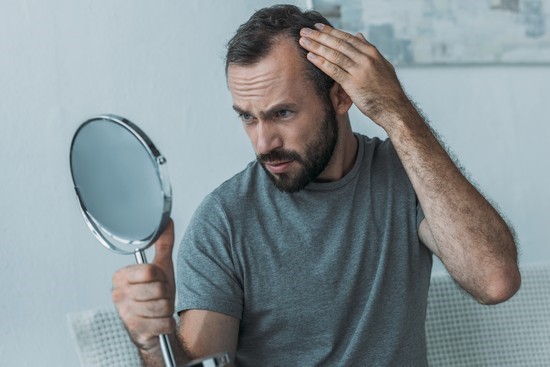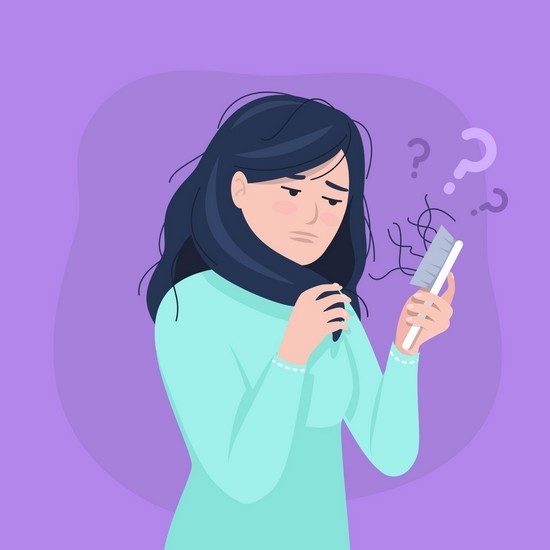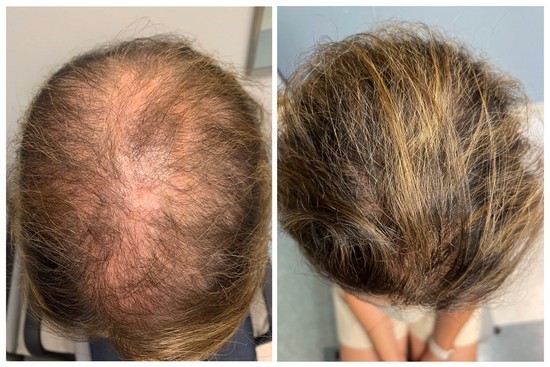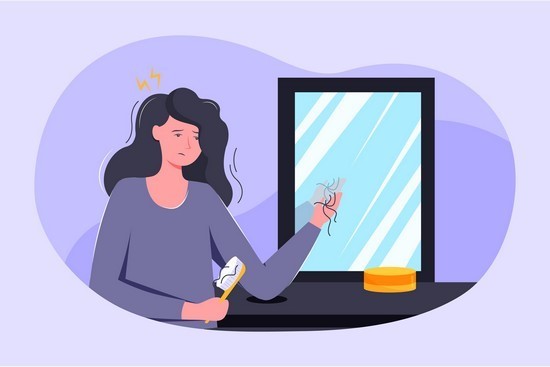The ads are everywhere — as are the inflated claims: Special shampoos and
treatments, sometimes costing thousands of dollars, will make hair grow. But
many
dermatologists who specialize in hair loss say that most of these products
do not work.
اضافة اعلان
“There is an endless array of useless hair-growth
remedies,” often at “significant cost,” said Dr Brett King, a dermatologist at
Yale School of Medicine. Yet, he added, “because people are desperate, such
hair growth remedies continue to abound.”
But there is a cheap treatment, he and other
dermatologists say, costing pennies a day, that restores hair in many patients.
It is minoxidil, an old and well-known hair-loss treatment drug used in a very
different way. Rather than being applied directly to the scalp, it is being
prescribed in very low-dose pills.

Although a growing group of dermatologists is
offering low-dose minoxidil pills, the treatment remains relatively unknown to
most patients and many doctors. It has not been approved by the
Food and Drug Administration for this purpose and so is prescribed off-label — a common
practice in dermatology.
“I call us the off-label bandits — a title I am
proud to bear,” said Dr Adam Friedman, professor and chair of dermatology at
George Washington University. He explained that dermatologists have been
trained to understand how medicines work, which allows them to try drugs
off-label. In dermatology, it is often clear if a treatment is helping. Does a
rash fade or not?
Dr Robert Swerlick, professor and chair of the
dermatology department at Emory University School of Medicine, agreed.

“I tell people most things we do are off-label
because there is nothing on-label,” he said. He provided a long list of
conditions, including skin pigment disorders, skin inflammatory disorders, and
relentless itching, for which the standard treatments are off-label.
Minoxidil, the active ingredient in Rogaine, a
lotion or foam that is rubbed on the scalp, was first approved for men in 1988,
then women in 1992, and it is now generic. The medicine’s use as a hair-growth
treatment was discovered by accident decades ago. High-dose minoxidil pills
were being used to treat high blood pressure, but patients often noticed that
the pills prompted hair growth all over their bodies. So its manufacturer
developed a minoxidil lotion — eventually named Rogaine — and got it approved
to grow hair on balding heads.
But dermatologists say the lotion or foam is not
particularly effective for some patients, perhaps because they stop taking it.
It has to get on the scalp itself — and hair gets in the way. Many, especially
women, stop using it because they dislike leaving the sticky substance in their
hair.

Johnson and Johnson, the current owner of Rogaine,
did not respond to requests for comment.
Others find it simply does not work for them.
Minoxidil has to be converted to an active form by sulfotransferase enzymes
that may or may not be present in sufficient quantities in hair roots. When the
drug is taken orally, it is automatically converted to an active form.
But that was not the reason the low-dose pills were
discovered. Instead, the discovery occurred also by accident 20 years ago.
Dr Rodney Sinclair, a professor of dermatology at
the University of Melbourne in
Australia, had a patient with female pattern
baldness. The hair on top of her head had thinned, and she hated the way it
looked. Unlike what happened with most of his patients, Rogaine worked for her,
but she developed an allergic rash on her scalp from the drug. Yet, if she
stopped taking it, her hair would thin again.
“So I was stuck,” Sinclair said. “The patient was
very motivated, and the one thing we knew was that if a patient has an allergy
to a topically applied medicine, one way to desensitize is to give very low
doses orally.”
To do that, Sinclair tried cutting minoxidil pills
into quarters. To his surprise, the low dose made her hair grow but did not
affect her blood pressure, the original purpose of the higher-dose drug.
He subsequently lowered the dose more and more until
he got down to effective doses of one-fortieth of a pill and began routinely
prescribing the drug. That first patient still takes it.

At a meeting in Miami in 2015, Sinclair reported
that low doses of minoxidil prompted hair growth in 100 successive women.
He published those results in 2017, noting that
rigorous studies were needed, in which some patients would be randomly assigned
to take minoxidil and others a sugar pill. But that has not happened. He said
he has now treated more than 10,000 patients.
Recently, a rising number of hair-loss
dermatologists have been giving the low-dose pills to patients with male and
female pattern hair loss, a normal occurrence with age.
“It is just starting to see a surge in popularity,”
said Dr Crystal Aguh, a dermatologist at Johns Hopkins School of Medicine.
“More and more at conferences, we are sharing our success stories.”
Doctors who do not specialize in hair loss, she
added, “would not be familiar with oral minoxidil,” except as a rarely used
treatment for high blood pressure that comes with a black-box warning that it
can cause heart problems. But, she and others say, the warning is for much
higher doses.
If hair loss is too severe, minoxidil will not help,
Aguh said. “It will not work, for example, if a man is mostly bald, with a
shiny scalp. There is nothing to restore.” She added that the ideal patient is
not completely bald but has lost enough hair that even a casual observer would
notice.
Without a rigorous trial leading to FDA approval,
though, the use of minoxidil pills for hair loss remains off-label. And,
dermatologists say, it is likely to remain so.
“Oral minoxidil costs pennies a day,” King said. “There
is no incentive to spend tens of millions of dollars to test it in a clinical
trial. That study truly is never, ever going to be done.”
Some patients taking low-dose minoxidil, though,
notice stray hairs growing on their faces and chins. So some dermatologists,
including Sinclair, have added another drug — very low doses of spironolactone,
a blood pressure drug that also blocks certain sex hormones called androgens —
to try to prevent unwanted hair growth.
Patients who do not want to go the off-label route
are left with what some dermatologists say are useless over-the-counter
remedies or one of two FDA-approved products for hair growth.
They include Rogaine and finasteride, a generic
medicine used at higher doses in men to treat a benign enlarged prostate. As a
hair-loss drug, it is approved for men only. It has also been linked to sexual
dysfunction.
Then, there is the word-of-mouth about minoxidil in
pill form.
“I’ve seen miracles happen,” Aguh said.
One involved Brandy Gray, 44, who lives in Monkton,
Maryland.
“I had been losing my hair over time,” she said.
“Then I starting having circular patches” with no hair. “They got worse and
worse.”
She had seen another dermatologist who gave her
shampoos and supplements, to no avail. Finally, she said her dermatologist told
her, “There is nothing left I can try for you, nothing more I can do.”
She went to Aguh, who gave her low-dose minoxidil.
Ten months later, her hair was thick and abundant.
“I can part my hair in different ways,” she said. “I
don’t wear wigs anymore.”
It is as if that hair loss never happened.
Read more Health
Jordan News



